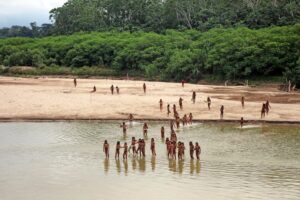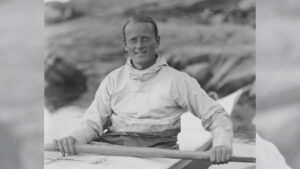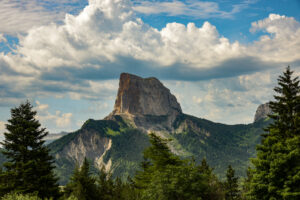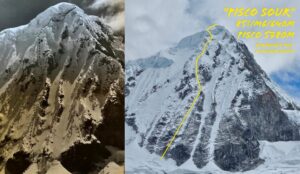Conquistador Francisco de Orellana lived in the shadow of greater men. He was a close ally of the Pizarro family, the same Pizarros who conquered the Inca Empire. While he supported the Pizarros faithfully and often went on military campaigns and expeditions with Francisco Pizarro’s half-brother Gonzalo, he fell out with them when he had an opportunity to navigate the then-unchartered Amazon River.
Background
Gonzalo Pizarro aimed to find the legendary El Dorado and the País de la Canela, or the Land of Cinnamon. Magellan had recently discovered the spice in the Philippines, and civilized Europe was agog over it. Pizarro wanted his expedition to be as grand as the riches he craved so badly. So he recruited a small army of over 200 Spaniards and around 4,000 natives to help them through the unfamiliar terrain and as translators.
Word of the epic journey got back to Francisco de Orellana in Guayaquil, the city which he founded in 1538. Orellana scrambled, trying to settle his affairs and gather additional men, animals, and supplies. He ended up missing the expedition’s launch in late January or the beginning of February 1541. According to Buddy Levy, who wrote extensively on the expedition in his book River of Darkness, many warned Orellana not to go because of the jungle’s many dangers. Orellana did not listen. He caught up with Pizarro and became his second in command.

Manuscript map of Francisco de Orellana’s expedition, attributed to Antonio Pereira, a Portuguese seaman. Photo: John Carter Brown Library
No cinnamon, or much of anything
Unsurprisingly, their grandiose plans of finding aromatic cinnamon plantations and gold in the dense tropical forest was a pipe dream. Almost three-quarters of the expedition members died from harsh weather, disease, and starvation. The survivors had to split up. One party traveled downstream in search of something, anything to eat.
According to Friar Gaspar de Carvajal, an expedition member and main documenter of the expedition, Orellana “was determined to leave behind him the little that he had with him and go on down the river [to search for] an inhabited region and food…”
For the rest of the men, Orellana’s mission was their only hope. Around 50 men accompanied Orellana on a newly built brigantine called the San Pedro. He and a few canoes set out in April 1541. Little did Pizarro know that Orellana would not return to him.
A little detour
Despite the group’s duty to return to Pizarro, Orellana and his men changed their plans. They decided to continue past the Napo River, a tributary that emptied into the Amazon. Seeing how much of a failure Pizarro’s voyage turned out to be, Orellana’s men placed all their hopes for survival on him.
Besides, the river seemed to have a mind of its own. The strong current and rapids swept the company downstream into unknown territory.

The Rio Napo. Photo: Morley Read/Shutterstock
Orellana tried his best to be honorable. He sent a boat back to Pizarro’s group with the awkward news. Pizarro decided to abandon the expedition, but not before dubbing Orellana a traitor. In his own words, Orellana “displayed toward the whole expedition the greatest cruelty that ever faithless men have shown.”
Pizarro began an intense smear campaign against him once he returned to Quito.
Orellana’s accidental triumph
Despite the unexpected expedition, Orellana’s group had more success than its predecessor. Orellana did his best to establish good relations with the natives. He tried to speak their language and established decent trade with several villages along the way. And of course, he and his company received food and aid.
Eventually, however, they ran into hostile groups, especially the Machiparo and Tapuyas. The Tapuyas included female warriors. This startling encounter near the Trombetus River was a pivotal moment. The strange women were supposedly mostly naked, tall, robust, and white like the fearsome Amazon warriors of ancient Greek myth. They inspired Orellana to name the river after them. However, these mysterious women warriors were never seen or heard of again.

Cubagua Island near Venezuela. Photo: Paolo Costa/Shutterstock
Soon after, their supplies ran out and hunger returned. But they reached the mouth of the Amazon in August of 1542, arriving at an island called Cubagua, near Venezuela. They had just become the first Europeans to navigate the Amazon River, a journey of 4,700km. The incredible feat prompted Orellana to go to Spain to receive funding and permission for another expedition.
Impressive for the time
Apart from becoming the first Europeans to navigate the Amazon, many other aspects made Orellana’s voyage so significant. According to writer Anthony Smith, “It is particularly difficult [to travel] near the rivers, where swamps and ox-bows, tributaries and profuse vegetation all compete to antagonize those on foot. Moreover, the rivers meander, and their followers must do likewise if not to lose their way.”
Beating all of these obstacles without prior experience is impressive for the time.
Ultra-marathon canoe racer West Hansen kayaked the length of the Amazon River with his team in 2012. In order to prepare for this expedition, he researched Orellana’s journey. When asked what he thought about Orellana’s success, he said that he believed that the Spaniard “succeeded out of dumb luck; the speed of the current pushing them downriver, the shock experienced by the locals since this was their first encounter with the Europeans…and the season just happened [to be the] flood season.”
Nevertheless, Orellana’s success inspired many more expeditions to the region.






